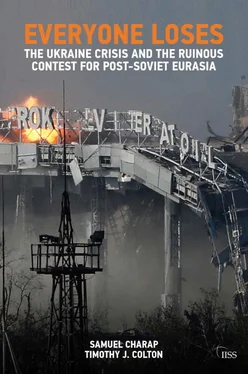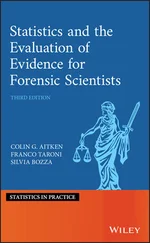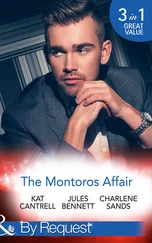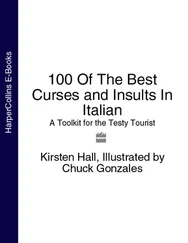Stresses and strains
A frontal altercation over the allegiance of the In-Betweens did not materialise at this juncture. But this did not mean that all was sweetness and light. Stresses and strains grew in both significance and frequency in the late 1990s.
Unlike the East Central Europeans, the In-Betweens had diverse partialities and taller hurdles to clear – greater exposure to Moscow’s hard and soft power, no historical memory of being part of Europe or national mission to ‘return’ to it, Western caution about taking on burdens to the east, and these countries’ poor track record on reform. In-Betweens Armenia and Belarus, along with Kazakhstan, opted to throw in more or less wholeheartedly with Russia. For the other In-Betweens, the unpalatability of sticking with Moscow, and the lack of an option of prompt entry into the Western tent, reduced them to coexisting with Russia and, when practicable, balancing against it, even in cases when segments of their elites would have been happier following the East Central Europeans and bandwagoning with an ascendant West. The elites as a rule had no appetite, however, for decisive market reform and democratic governance, Polish-style, or for relinquishing the political monopoly and lucrative economic rents that went with the status quo. Public opinion, which did not always mimic elite opinion, was still another constraint. In Ukraine, for example, citizens in 2000 had a much warmer view of Russia than of the US or NATO, and 60% approved of an East Slavic confederation with Russia and Belarus. [78] Mark Kramer, ‘Ukraine, Russia, and US Policy’, PONARS Policy Memo, no. 91, April 2001, https://www.gwu.edu/~ieresgwu/assets/docs/ponars/pm_0191.pdf .
In practice, restrained balancing against Russia could work in an assortment of tangible ways, rarely earth-shaking. In expeditions to the post-Soviet capitals, Western envoys got used to hearing pleas to intercede with Moscow on their behalf, on points both petty and consequential. Few meetings passed without requests for public manifestations of solidarity with the locals. Governments enrolled in all available international organisations, signed declarations of good wishes ad infinitum with the Americans and Europeans, garnered invitations to Brussels, Berlin and Washington, showed up at protocol events and celebrations staged by the West, and dragged their feet on the implementation of CIS agreements. They could also accept or solicit sometimes-generous Western foreign-aid programmes. These were ostensibly apolitical measures but they reflected the realities of the time: Western prosperity and Russia’s relative lack of resources. From 1995 onwards, the US had a declared policy to give the In-Betweens and the Central Asians a bigger collective slice of the assistance pie for the former Soviet region than Russia’s share. By 1998, Russia received only 17% of the total aid for the 12 post-Soviet Eurasian countries, while Ukraine, with less than one-third of Russia’s population, got more and was now the third-largest recipient after Israel and Egypt globally. ‘In part, strategic considerations – including the desire to fortify the security and independence of Ukraine and Uzbekistan and the goal of establishing better relations with the oil-rich states of the Caspian region – pushed aid in this non-Russian direction.’ [79] James Goldgeier and Michael McFaul, Power and Purpose: U.S. Policy toward Russia After the Cold War (Washington DC: Brookings Institution Press, 2003), p. 118.
Pocketing favours from one side was not seen as incompatible with doing the same from the other. Some of the In-Between leaders of the time – Kuchma of Ukraine and Shevardnadze of Georgia come to mind – were virtuosos at playing the West and Russia off each other in order to wring concessions from both.
An oft-heard explanation of the turbulence between Russia and the West that eventually surfaced is the coming to power of a new Russian president: Vladimir Putin, inaugurated in May 2000 after serving four months as acting president following Yeltsin’s early retirement. In fact, Putin’s arrival corresponded with several years of an upturn, generally speaking, in Russian interaction with the West. The new man in the Kremlin revived the NATO–Russia relationship and received the NATO secretary-general, George Robertson, soon after taking office. The latter opined that things had crept ‘from the permafrost into slightly softer ground’. [80] ‘BBC Breakfast with Frost, Interview: Vladimir Putin’, 5 March 2000, http://news.bbc.co.uk/hi/english/static/audio_video/programmes/breakfast_with_frost/transcripts/putin5.mar.txt .
Putin’s public statements recalled Yeltsin’s and Gorbachev’s musings about Russia finding a home in the Western community. ‘Russia’, he said in an interview with David Frost of the BBC in 2000, ‘is part of the European culture’, and he could not picture it ‘in isolation from Europe and what we often call the civilised world’. He was against demonising NATO as a perpetual enemy; ‘even posing the question this way will not do any good to Russia or the world’. ‘Could Russia ever join NATO?’, Frost wanted to know. ‘I don’t see why not’, replied Putin. ‘I would not rule out such a possibility… if and when Russia’s views are taken into account as those of an equal partner.’ [81] Robyn Dixon, ‘With NATO Chief’s Visit to Russia, a Thaw Begins’, Los Angeles Times , 17 February 2000, http://articles.latimes.com/2000/feb/17/news/mn-65412 .
He raised the issue of Russia’s potential NATO membership when he first met an American president, Bill Clinton, in June 2000. Clinton was non-committal, but Kremlin staffers were instructed to investigate the nuts and bolts of Russian accession. [82] Authors’ interview with a former senior Russian official, May 2016.
Putin hit it off personally with several Western leaders, including Clinton’s successor, George W. Bush. After meeting the Russian in Slovenia in June 2001, Bush legendarily exclaimed that he had caught a glimpse of Putin’s ‘soul’.
Putin telephoned Bush with condolences over the 9/11 attacks before any other world leader, and asked CIS governments in Central Asia to satisfy US basing needs for the onslaught against al-Qaeda and the Taliban in Afghanistan. Russia filled intelligence gaps before the American invasion and there was some cooperation with the American services in the field. This led to talk of a new US–Russia alliance in the war on terror. In the months after 9/11, Putin again raised the possibility of a Russian place in NATO with Robertson. The NATO secretary-general reportedly gave him the standard line about formal procedures and practices. Putin undoubtedly heard: ‘get in line behind Estonia and Bulgaria’.
A decidedly more forward American posture in post-Soviet Eurasia – in part a by-product of the Bush administration’s global prioritisation of counter-terrorism and democracy promotion – chipped away at the Clinton-era tradition of self-imposed restraints and consideration of Russian sensitivities. In the spring of 2002, for example, Washington embarked on the Georgia Train and Equip Program (GTEP), spending some US$65m and sending in several hundred US special forces to participate. It was designed to modernise the Georgian military and get into shape four battle-ready battalions that could do their bit in the war on terror. The immediate assignment was to pacify the restive Pankisi Gorge abutting the Russian republic of Chechnya, where a war against separatists was raging. Putin mouthed tentative support (his government had long complained about Chechen rebels taking refuge in Pankisi), but Russian attitudes cooled once new projects replaced GTEP and Georgian forces were enlisted in the American adventure in Iraq. ‘The minuscule U.S. presence in Georgia had a symbolic significance far greater than was warranted by its size, and presaged a trend that became increasingly visible during the decade and increasingly worrisome to Moscow.’ [83] Hill, Russia, the Near Abroad, and the West , p. 39.
Читать дальше











